Contents
- 1 A Parent’s Guide to Transitioning from Two Naps to One: Tips and Strategies
- 1.1 Why Transitioning from 2 Naps to 1 is Important
- 1.2 Signs That Your Child is Ready for the Transition
- 1.3 FAQ about topic Transitioning from 2 Naps to 1 A Guide for Parents
- 1.3.1 When should I start transitioning my child from 2 naps to 1?
- 1.3.2 How do I know if my child is ready to transition to 1 nap?
- 1.3.3 What is the best time for the single nap?
- 1.3.4 How do I transition my child to 1 nap?
- 1.3.5 What if my child still seems tired with only 1 nap?
- 1.3.6 When should I start transitioning my baby from 2 naps to 1?
- 1.3.7 How do I know if my baby is ready for the transition?
- 1.3.8 What is the best way to transition my baby from 2 naps to 1?
- 1.3.9 Will my baby be more tired during the transition?
- 1.3.10 What if my baby still seems tired after transitioning to 1 nap?
A Parent’s Guide to Transitioning from Two Naps to One: Tips and Strategies
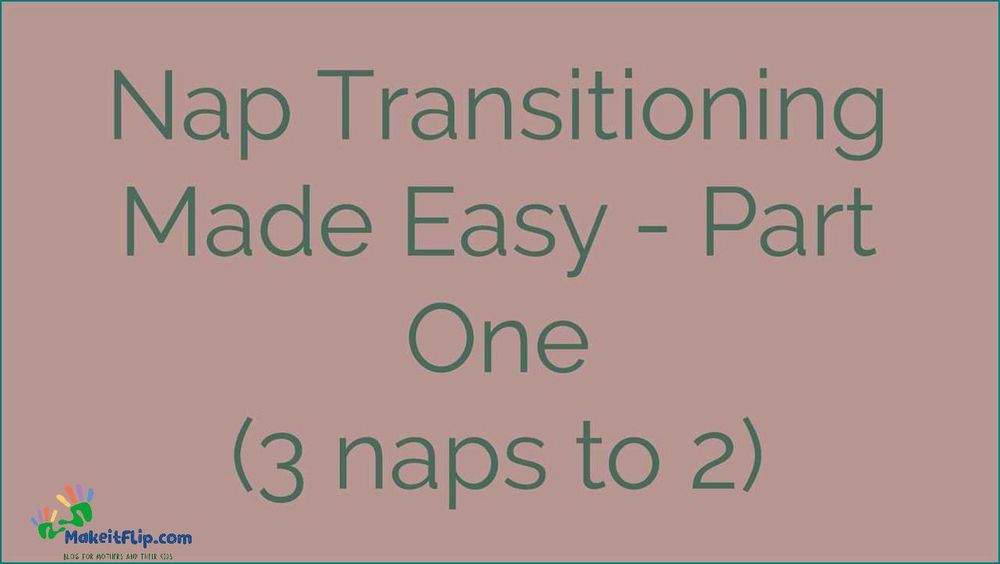
As your toddler grows and develops, their sleep needs and patterns change. One of the biggest adjustments parents often face is transitioning their child from two naps a day to just one. This transition can be challenging for both the child and the parent, but with a little patience and a consistent routine, it can be a smooth process.
When toddlers are around 12-18 months old, they typically start showing signs that they are ready to transition to one nap. These signs can include resisting the morning nap, taking longer to fall asleep for the second nap, or not being tired enough for a second nap. It’s important to pay attention to your child’s cues and adjust their schedule accordingly.
During this transition, it’s common for toddlers to be more tired than usual. Their bodies are adjusting to the new routine, and it may take some time for them to get used to the longer awake time between naps. Be patient and offer extra comfort and support during this period of adjustment.
Establishing a consistent nap routine is key during this transition. Stick to a regular nap time and create a calming environment to help your child wind down and relax. A consistent routine will signal to your toddler that it’s time to rest and make the transition easier for them.
Remember, every child is different, and the transition from two naps to one may take longer for some than others. Be flexible and adjust your child’s schedule as needed. With time and patience, your toddler will adapt to their new nap schedule and you’ll both enjoy the benefits of a more predictable routine.
Why Transitioning from 2 Naps to 1 is Important
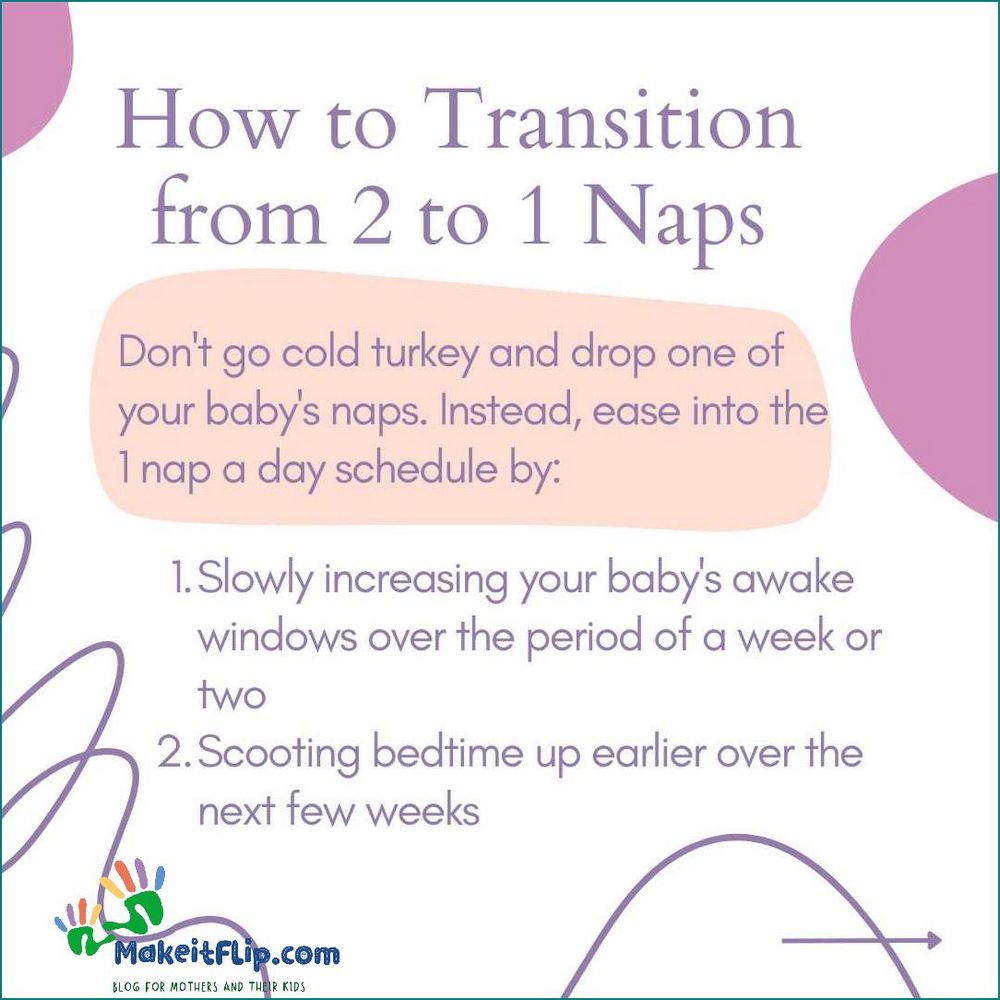
Transitioning from 2 naps to 1 is an important milestone in your toddler’s development. It signifies a shift in their routine and schedule, as well as their growing independence.
As your toddler grows, their sleep needs change. They may start to become more tired during the day and have difficulty falling asleep for their second nap. This is a sign that they are ready to transition to 1 nap a day.
Transitioning from 2 naps to 1 nap allows your toddler to consolidate their sleep and have a longer period of rest. This can be beneficial for their overall development and well-being.
Adjusting to 1 nap a day may take some time and patience. Your toddler may initially resist the change and have difficulty adjusting to the new schedule. It’s important to be consistent and provide a calm and soothing environment for them to nap in.
During this transition period, it’s important to pay attention to your toddler’s cues and adjust their nap time accordingly. Some toddlers may need an earlier nap time, while others may need a later one. It’s important to find a schedule that works best for your child.
Overall, transitioning from 2 naps to 1 is an important step in your toddler’s development. It allows them to adjust to a new routine and schedule, while also providing them with the rest they need for their growth and development.
Understanding Your Child’s Sleep Needs

As your child grows and develops, their sleep needs will change. It’s important to understand these changes and adjust their sleep schedule accordingly.
One of the signs that your child may be ready to transition from two naps to one is if they seem tired or cranky during one of their naps. This could be a sign that they are ready to consolidate their naps into one longer nap.
During the transition period, your child may need some time to adjust to the new schedule. They may have a harder time falling asleep or staying asleep during this time. It’s important to be patient and provide them with a consistent sleep routine to help them through this adjustment period.
It’s also important to pay attention to your child’s sleep cues. If they are consistently waking up early from their nap or seem tired throughout the day, it may be a sign that they need more sleep. On the other hand, if they are consistently taking longer naps or seem well-rested with just one nap, it may be a sign that they are ready to transition to one nap.
Remember, every child is different and may have different sleep needs. It’s important to pay attention to your child’s individual cues and adjust their sleep schedule accordingly. By understanding your child’s sleep needs and providing them with a consistent sleep routine, you can help them get the sleep they need for healthy development.
Benefits of Transitioning to 1 Nap
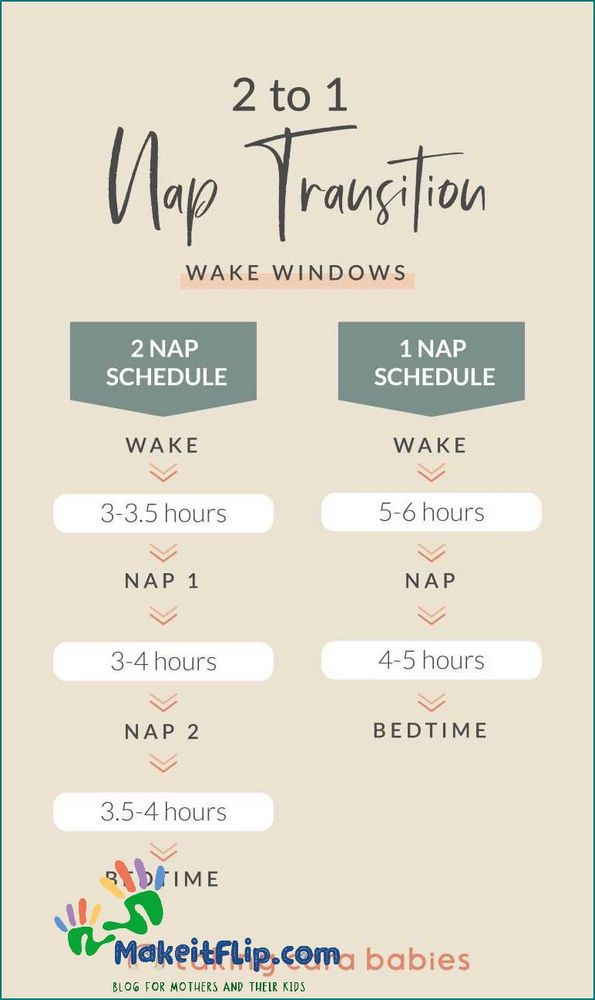
Transitioning from 2 naps to 1 nap can have several benefits for both toddlers and parents. Here are some of the advantages:
1. Better quality sleep: With one longer nap, your toddler has the opportunity to get a more consolidated and restful sleep. This can lead to improved mood and behavior throughout the day.
2. Easier adjustment: Transitioning to one nap can help your toddler adjust to a more consistent sleep schedule. Having a set nap time can make it easier for them to fall asleep and wake up at the same time every day.
3. More flexibility: One nap allows for more flexibility in your toddler’s daily routine. You can plan outings and activities without worrying about interrupting their nap schedule.
4. Enhanced development: As your toddler transitions to one nap, they may have more awake time during the day. This can provide additional opportunities for learning, exploration, and social interaction, which are important for their overall development.
5. Simplified routine: Having only one nap can simplify your daily routine. You won’t have to worry about coordinating multiple nap times or adjusting your schedule to accommodate two naps.
Overall, transitioning to one nap can be a positive change for both you and your toddler. It can lead to better sleep, easier adjustment, more flexibility, enhanced development, and a simplified routine.
Signs That Your Child is Ready for the Transition
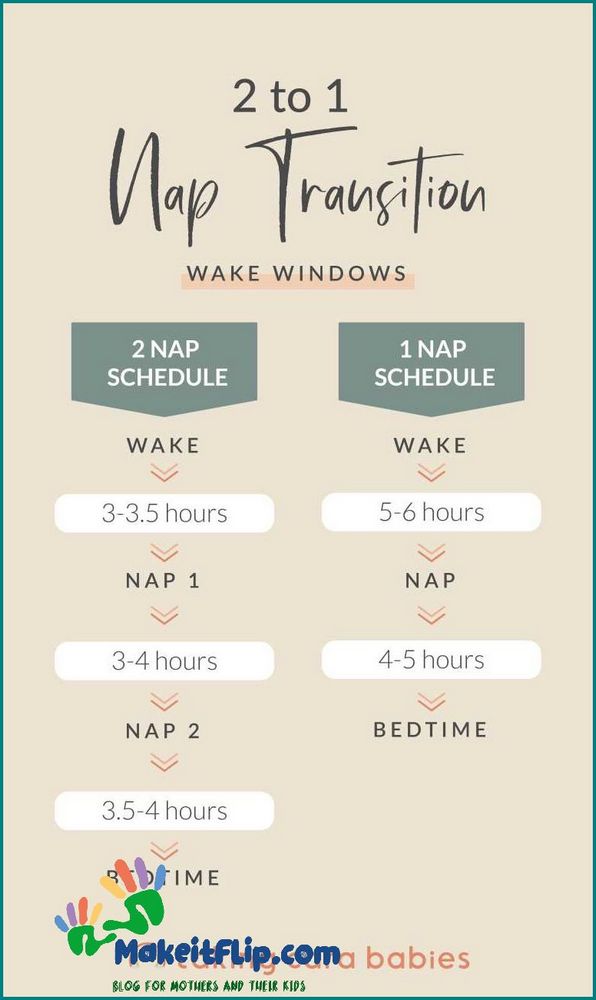
Transitioning from two naps to one can be a big step for both parents and toddlers. It’s important to pay attention to your child’s schedule, routine, and development to determine if they are ready for this transition.
One of the first signs that your child may be ready to transition from two naps to one is a consistent schedule. If your child consistently wakes up at the same time each day and goes to bed at the same time each night, it may be a good indication that they are ready for a single nap.
Another sign to look out for is a change in your child’s routine. If they are consistently refusing one of their naps or taking longer to fall asleep during one of their naps, it may be a sign that they are ready to transition to one nap a day. Additionally, if your child is consistently waking up early from their second nap, it may be a sign that they no longer need it.
Developmental milestones can also play a role in determining if your child is ready for the transition. If your child is reaching new milestones, such as walking or talking, they may be more tired from their increased activity and ready for a longer nap during the day.
Lastly, pay attention to your child’s overall sleep patterns. If your child is consistently sleeping through the night and waking up refreshed, it may be a sign that they are ready for the transition. On the other hand, if your child is consistently tired and cranky throughout the day, it may be a sign that they still need two naps.
Remember, every child is different, and there is no one-size-fits-all approach to transitioning from two naps to one. Pay attention to your child’s cues and consult with your pediatrician if you have any concerns or questions about the transition.
Shortened Morning Nap
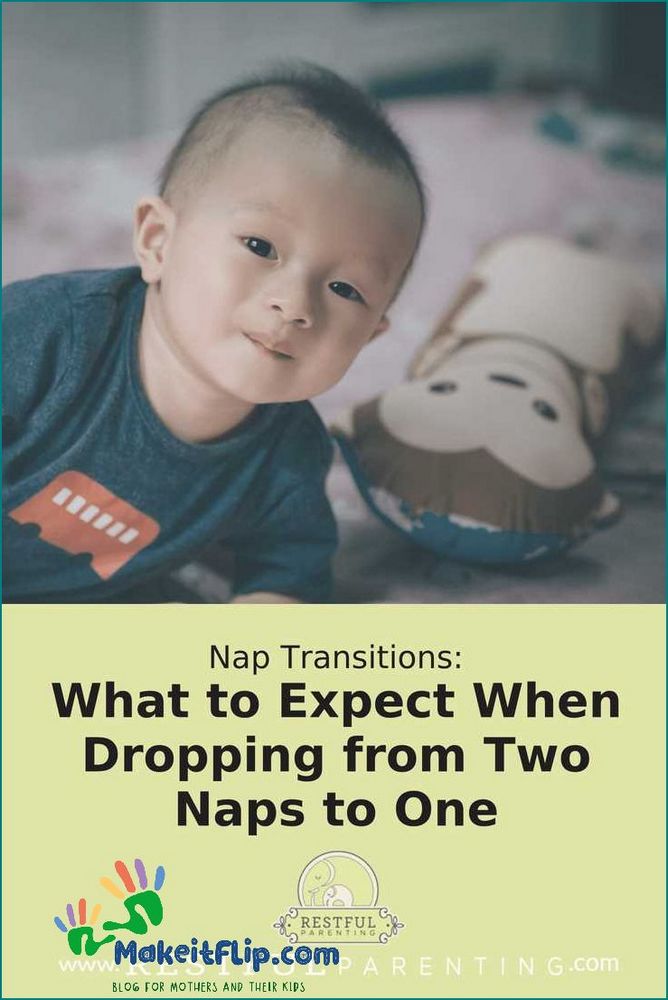
As your toddler continues to grow and develop, their sleep needs will change. One of the adjustments you may need to make is transitioning from two naps to one. This transition can be a challenging time for both you and your child, but with a consistent schedule and routine, it can be a smooth process.
One of the first steps in this transition is shortening the morning nap. This can help your toddler stay awake longer in the morning and be ready for a longer afternoon nap. Start by gradually reducing the length of the morning nap by 15 minutes each day until it is around 30-45 minutes long.
During this adjustment period, it’s important to pay attention to your toddler’s cues and adjust their schedule accordingly. If they seem tired and cranky in the morning, you may need to allow for a slightly longer morning nap. On the other hand, if they are having trouble falling asleep for their afternoon nap, you may need to shorten the morning nap even more.
Remember that every child is different, and their sleep needs may vary. Some toddlers may be ready to transition to one nap as early as 12-14 months, while others may not be ready until closer to 18 months. Pay attention to your child’s behavior and sleep patterns to determine the best timing for this transition.
As you navigate this transition, be patient and understanding with your toddler. It may take some time for them to adjust to the new schedule, and they may have days where they are more tired than usual. Stick to a consistent routine and provide a calm and soothing environment for naptime to help them transition smoothly.
By gradually shortening the morning nap and paying attention to your toddler’s cues, you can help them transition from two naps to one. Remember that this is a normal part of their development and with time, they will adjust to the new sleep schedule.
Difficulty Falling Asleep for the Second Nap
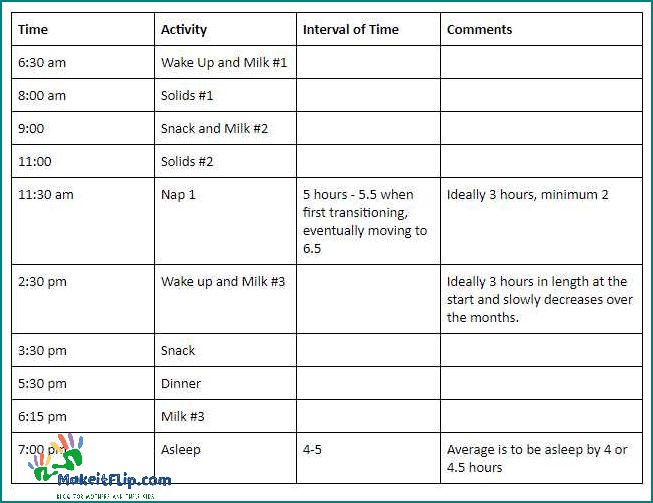
During the transition from two naps to one, many toddlers experience difficulty falling asleep for the second nap. This can be due to tiredness from the adjustment in their schedule and the natural development of their sleep patterns.
As toddlers grow and develop, their sleep needs change. While they may have been able to easily fall asleep for two naps in the past, their bodies and minds may now require less daytime sleep. This can make it challenging for them to settle down for a second nap, especially if they are not tired enough.
It is important to recognize that this difficulty falling asleep for the second nap is a normal part of the transition process. As your toddler adjusts to the new schedule, their sleep patterns will gradually adapt. It may take some time for them to get used to the new routine, so patience and consistency are key.
To help your toddler during this transition, you can try the following strategies:
- Gradually shift the timing of the first nap to a later time, allowing for a longer awake period before the second nap. This can help ensure that your toddler is tired enough to fall asleep for the second nap.
- Establish a consistent naptime routine that signals to your toddler that it is time to relax and prepare for sleep. This can include activities such as reading a book, singing a lullaby, or dimming the lights.
- Create a calm and soothing sleep environment by minimizing distractions and ensuring that the room is dark, quiet, and at a comfortable temperature.
- Offer comfort and reassurance if your toddler is having trouble settling down for the second nap. This can include gentle rocking, cuddling, or providing a comfort object.
- Be flexible and responsive to your toddler’s individual needs. If they consistently struggle with the second nap, it may be a sign that they are ready to transition to one nap a day. Pay attention to their sleep cues and adjust their schedule accordingly.
Remember, every child is different, and the transition from two naps to one may vary in difficulty. With time, patience, and understanding, your toddler will eventually adapt to the new sleep schedule and settle into a consistent nap routine.
FAQ about topic Transitioning from 2 Naps to 1 A Guide for Parents
When should I start transitioning my child from 2 naps to 1?
Every child is different, but most children are ready to transition from 2 naps to 1 between 12 and 18 months of age. Look for signs that your child is no longer tired enough for a morning nap or is having trouble falling asleep for an afternoon nap.
How do I know if my child is ready to transition to 1 nap?
There are several signs that your child may be ready to transition to 1 nap. These include consistently taking longer to fall asleep for the morning nap, resisting the afternoon nap, or taking shorter naps overall. Your child may also seem more alert and energetic during the day, even with 2 naps.
What is the best time for the single nap?
The best time for the single nap depends on your child’s age and schedule. Generally, it’s best to aim for a midday nap, around 12:30 or 1:00 PM. This allows your child to have a restful nap and still have enough time to be tired for bedtime. Adjust the timing based on your child’s individual needs and sleep patterns.
How do I transition my child to 1 nap?
The transition to 1 nap can be done gradually over a period of a few weeks. Start by gradually pushing back the morning nap by 15 minutes each day until it becomes the afternoon nap. During this transition period, you may need to offer a shorter morning nap to bridge the gap. Eventually, your child will adjust to the new schedule and be ready for a single midday nap.
What if my child still seems tired with only 1 nap?
It’s normal for your child to seem tired during the transition period, as their body adjusts to the new schedule. However, if your child consistently seems overly tired or cranky with only 1 nap, you may need to adjust the timing or duration of the nap. Experiment with different nap lengths and see what works best for your child.
When should I start transitioning my baby from 2 naps to 1?
You can start transitioning your baby from 2 naps to 1 when they are around 12-18 months old. However, every baby is different, so it’s important to pay attention to their individual sleep needs and cues.
How do I know if my baby is ready for the transition?
There are a few signs that can indicate your baby is ready to transition from 2 naps to 1. These signs include consistently taking longer to fall asleep for the second nap, resisting the second nap altogether, and having trouble falling asleep at bedtime. Additionally, if your baby is consistently taking longer naps, it may be a sign that they are ready for the transition.
What is the best way to transition my baby from 2 naps to 1?
There are a few different approaches you can take to transition your baby from 2 naps to 1. One approach is to gradually shorten the length of the first nap and push the second nap later in the day. Another approach is to gradually shift the timing of the naps until they are closer together. It’s important to be patient and flexible during this transition, as it may take some time for your baby to adjust to the new schedule.
Will my baby be more tired during the transition?
It’s possible that your baby may be more tired during the transition from 2 naps to 1. This is because they are getting less overall sleep during the day. However, this tiredness should only be temporary as your baby adjusts to the new schedule. It’s important to provide a consistent and calm sleep environment during this time to help your baby adjust and get the rest they need.
What if my baby still seems tired after transitioning to 1 nap?
If your baby still seems tired after transitioning to 1 nap, it’s possible that they may need a longer nap or an earlier bedtime. Pay attention to their sleep cues and adjust their schedule as needed. It’s also important to ensure that your baby is getting enough physical activity and stimulation during their awake time to help them sleep better at night.
I’m Diana Ricciardi, the author behind Makeitflip.com. My blog is a dedicated space for mothers and their kids, where I share valuable insights, tips, and information to make parenting a bit easier and more enjoyable.
From finding the best booster seat high chair for your child, understanding the connection between sciatica and hip pain, to exploring the benefits of pooping in relieving acid reflux, I cover a range of topics that are essential for every parent.
My goal is to provide you with practical advice and solutions that you can easily incorporate into your daily life, ensuring that you and your child have the best possible experience during these precious years.
